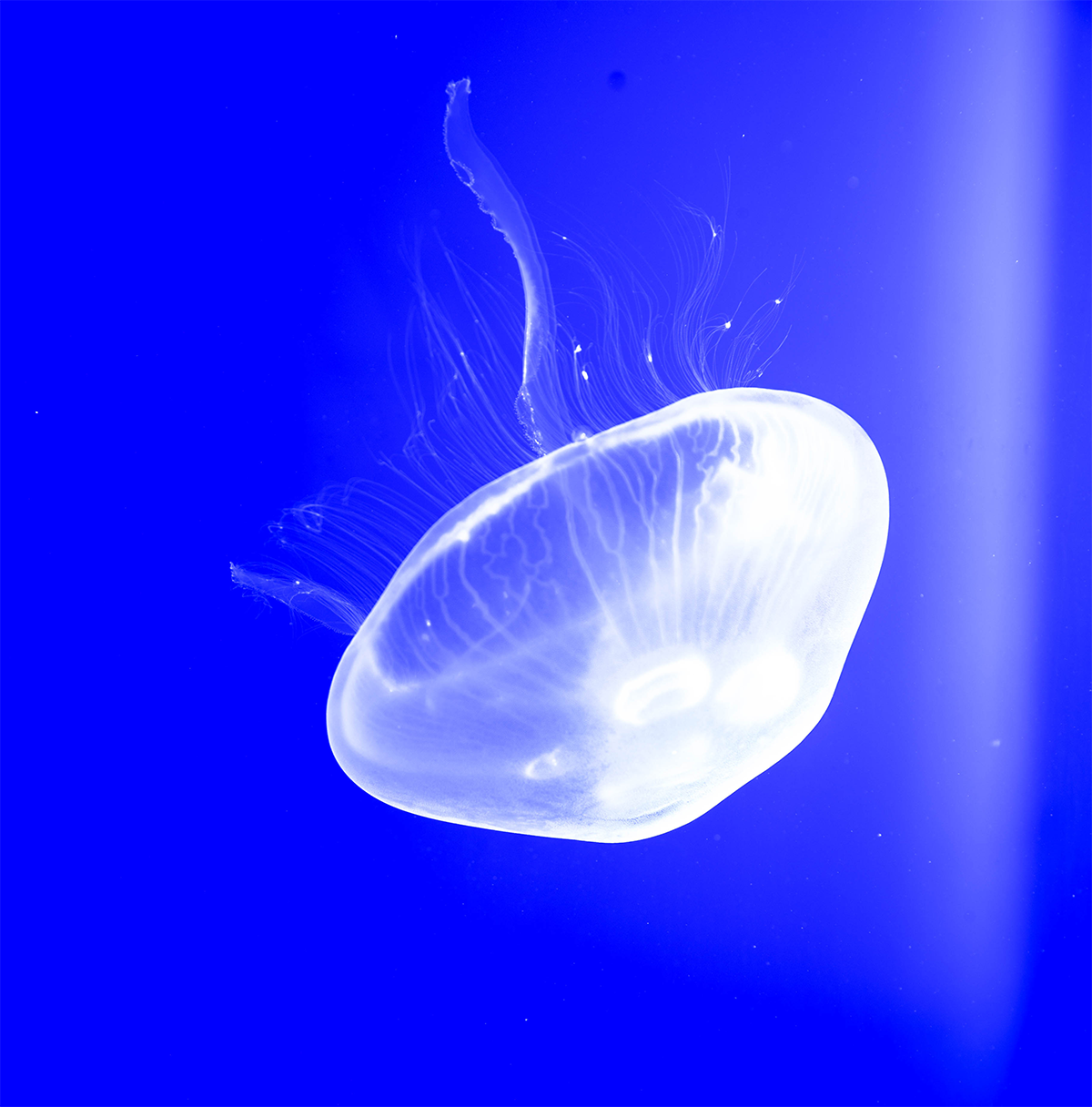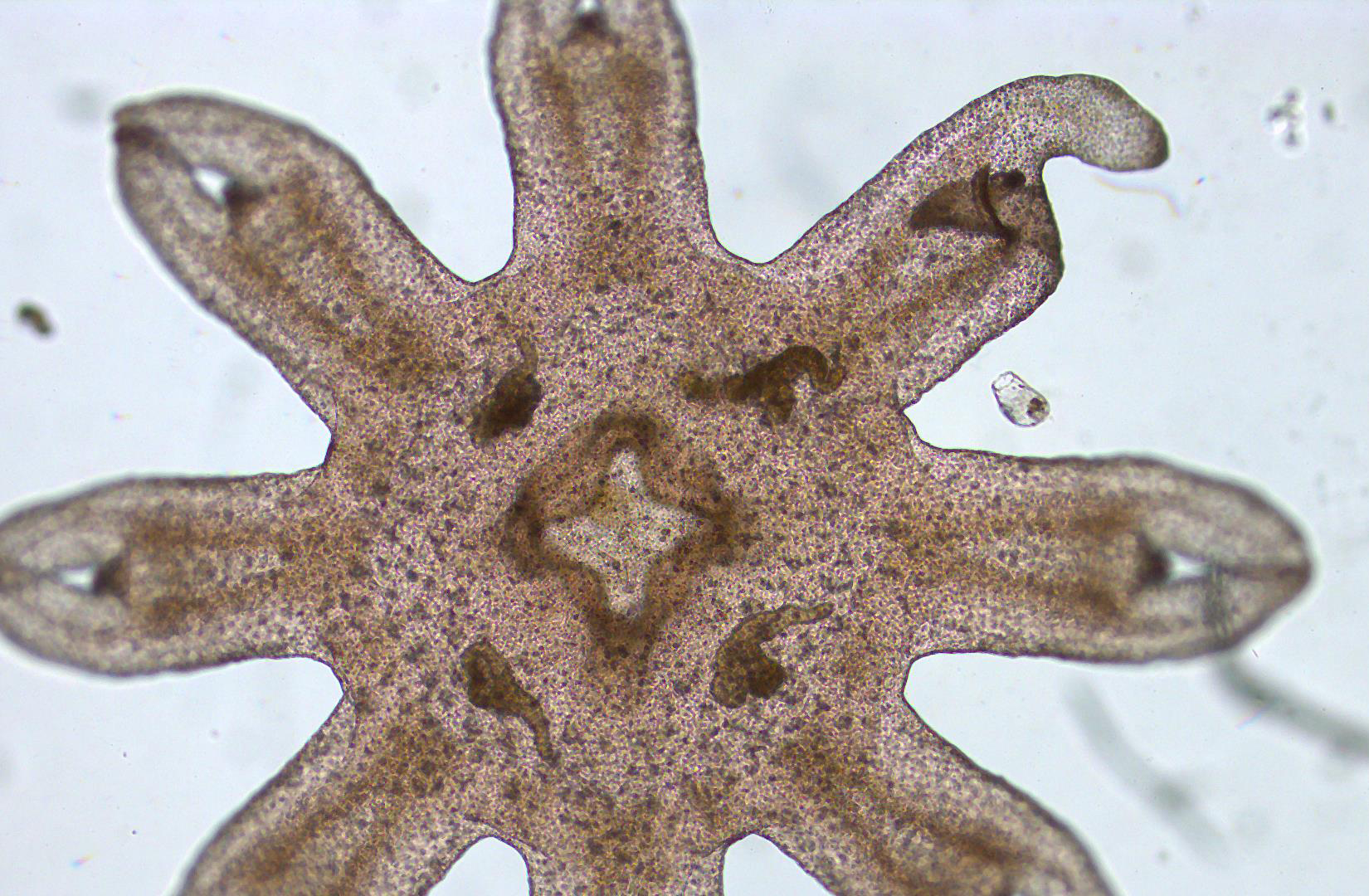iLab's New Moon Jellyfish
Inspiration, almost by definition, can happen when you least expect it. On a 2007 visit to the New England Aquarium in Boston, Deb Bailey gravitated toward a special exhibit on jellyfish. It was love at first sight. “All I could think of was how particularly serene and lovely they were,” Bailey says. “Just the way they moved.” Bailey soon noticed she was not alone. “So many other people just sat there forever ... watching ... mesmerized.”
Now a co-manager of the Museum’s Micro World Investigate Lab, Bailey is in a unique position to turn inspiration into education. And while the jellyfish memory had been in the back of her mind for the past 10 years, everything finally came to the forefront this spring. For months, members of the Museum’s Living Collections staff had been talking to her about the moon jellyfish they were raising on site, and how they wished they had somewhere to put them on display. More recently, Bailey had sought to partner with educators at the Monitor National Marine Sanctuary to develop marine science courses, including one exploring the role of jellyfish in ecosystems in or near shipwrecks. Finally, with funding from longtime lab supporter Biogen Foundation, Bailey dove in, buying the tank and supplies necessary to house live moon jellyfish in her lab.
For more in-depth description including a "behind the scenes" look with our Living Collections staff, check out the full article in the current issue of the Naturalist.
Moon Jellyfish
- Scientific Name: Aurelia sp.
- Range: Coastal regions of the Pacific Ocean from San Diego, California, to Prince William Sound, Alaska[1]
- Habitat: Open waters with temperatures ranging from -6 to 31 degrees C[1]
- Diet: Small zooplankton such as molluscs, crustaceans, fish eggs, and other small jellies[1]
- Description: The translucent, moonlike bell that is characteristic of Aurelia sp. has earned moon jellies their common name. They do not have the long trailing tentacles that people usually associate with jellyfish. Instead, they have a fine fringe lining the bell margin. The body form of Aurelia sp. is distinguished from close relatives in the genus Aurelia by an enlarged, fleshy manubrium, four oral arms protruding from the base of the manubrium, planulae (ciliated fertilized egg) brooding on the manubrium, and secondary scalloping of the bell margin between rhopalia, forming 16 notches. Aurelia sp. ranges from 100 mm to 450 mm. Bells of juveniles and young adults are translucent, and with maturity they turn milky white, sometimes with a pink, purple, peach, or blue tint[1].

Financial support provided by Biogen Foundation



